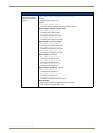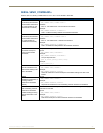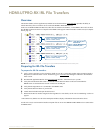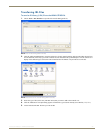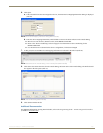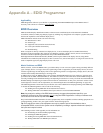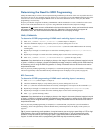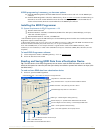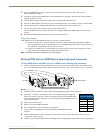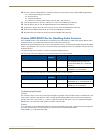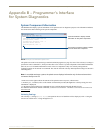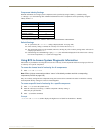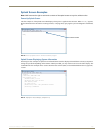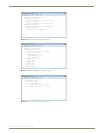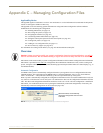
Appendix A – EDID Programmer
103
Instruction Manual – HDMI-UTPRO-0808
If EDID programming is necessary, you have two options:
Install the EDID Programmer. Read the EDID from the destination device and write it to the HDMI input
connector.
Install the EDID Programmer. Check the “EDID Library” file at www.amx.com (search for EDID Library) to
determine if one of the custom EDID files meets the needs of the equipment. (The custom EDID files are
variants of base EDIDs.) Write the custom EDID file to the HDMI input connector.
Installing the EDID Programmer
PC System Requirements for EDID Programmer v1.2.0
Windows XP Professional
©
Minimum Hardware: 166 MHz, 128 MB RAM, 20 MB of free disk space*, 800x600 display, serial port,
video card with dual outputs**
Recommended Hardware: 2.0 GHz, 512 MB RAM*
* The installation process requires 20 MB of disk space for the EDID Programmer installer. Once installed, the EDID
Programmer requires 5 MB of disk space.
** We strongly urge the user not to use video cards with DMS-59 connectors. Video cards with DMS-59 connectors have
been shown to fail consistently and, in the worst case, can corrupt an EDID data file.
A PC with an HDMI, DVI, or VGA output connector is a good solution. Cards with 2 HDMI connectors, 2 DVI
connectors, 2 VGA connectors, or cards with a combination of any two of the three (HDMI, DVI, and VGA) are also
acceptable.
To install EDID Programmer software:
1.
Locate and open the installer <EDIDProgrammer_1.2.exe> at www.amx.com.
2. Follow the directions in the wizard.
Reading and Saving EDID Data from a Destination Device
Tip: The Save button in the EDID Programmer can be used to save the EDID information as an .edid file,
which can be opened as a text file (click the Open button) and edited or opened and written to an input (click
the Write button).
To read and save EDID data from a destination device:
1.
On the PC, open the EDID Programmer.
Available Displays drop down list – select device
Close – shuts down application; will not prompt to save
Open – an EDID file
Save – an EDID file to edit or to write to input
Refresh Display List – updates list after additional devices attached
Convert to Digital / Convert to Analog – converts displayed EDID data
Query AutoPatch Device – acquires enclosure’s XNNet ID address
EDID Information – data (read-only) from file or device
EDID Type – indicates digital or analog (read-only)
Read – reads EDID from selected destination device
Write – writes EDID to input
Communication menu – use to select PC serial port or change baud rate
Status – shows application status (read-only)
edid programmer
Target Device – select Matrix Switcher



